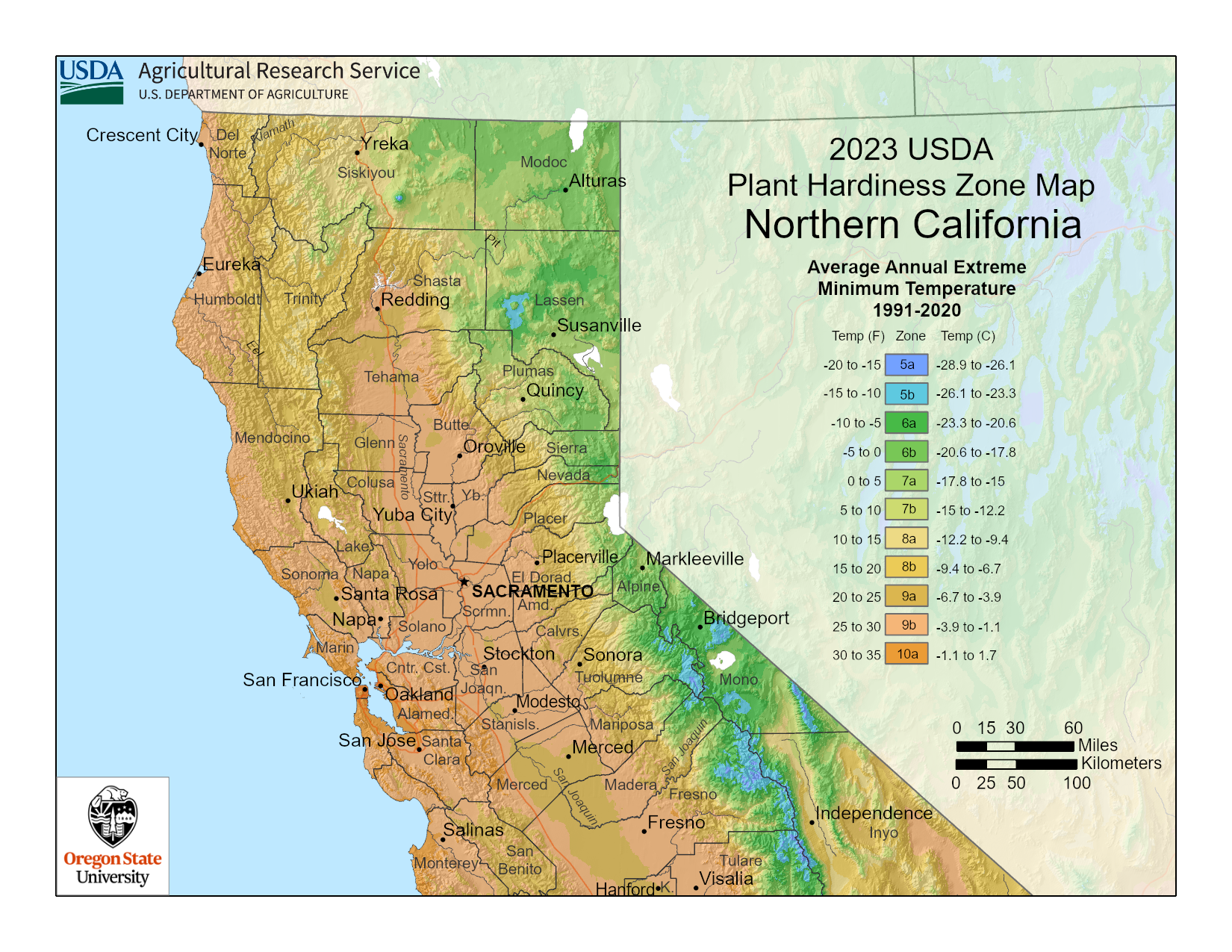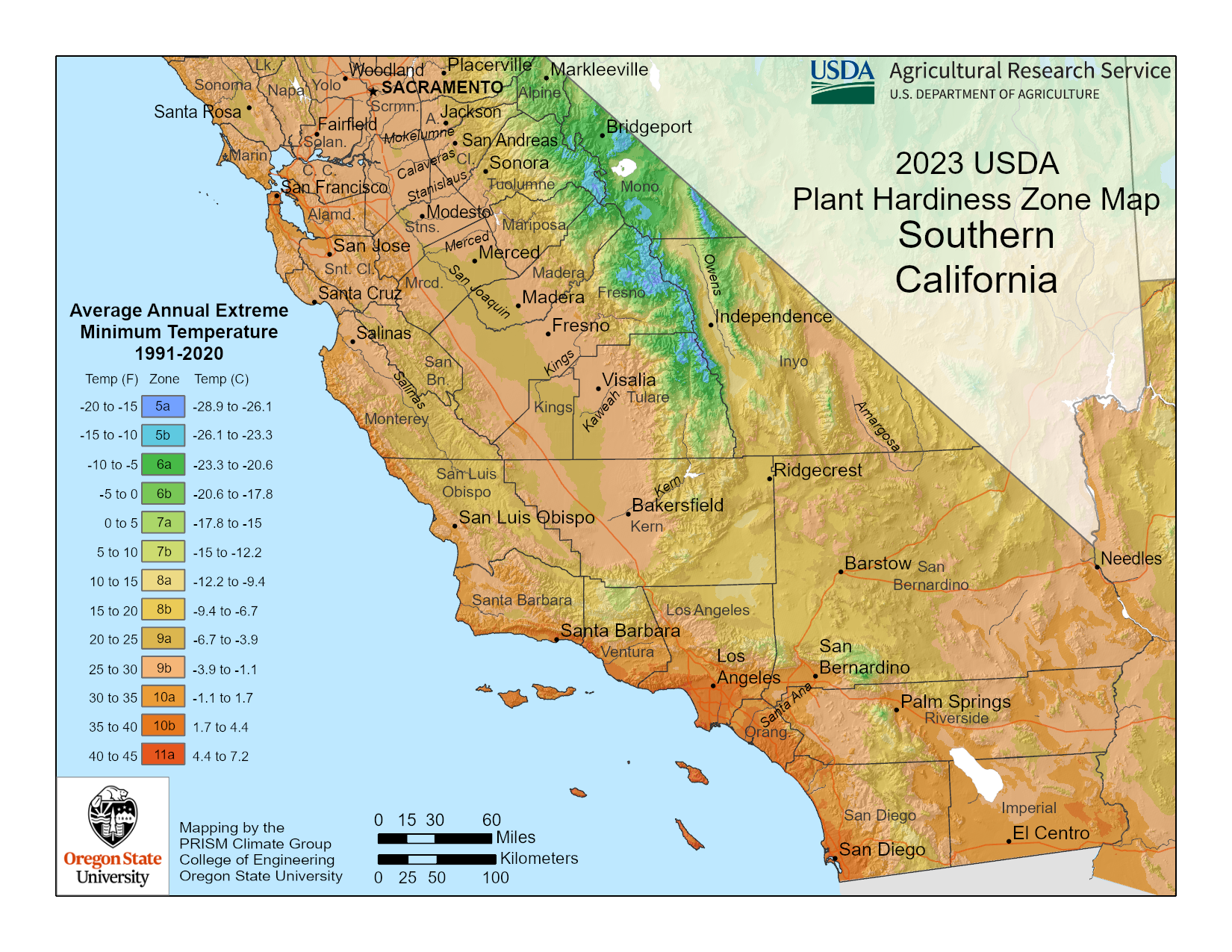California Planting Zones - USDA Map of California Growing Zones
Determining your planting zone in California will enhance your gardening experience and help you select the right plants for your region.
Because it is such a large state, California hardiness zone maps cover a wide range of temperatures and are divided into two sections. To find the planting zone for California that you live in, simply find the area on the maps below and match the color of that area to the map legend to the right or left.

The mountainous regions experience colder temperatures, placing them in zones 5 and 6. In contrast, the mild and Mediterranean climate prevalent in the coastal areas corresponds to Zones 9, 10 and 11. This variation allows gardeners in California to cultivate a wide array of plants suited to their specific local climate.

Click on either image above to see a larger version.
Learn More About The Map Of USDA Hardiness Zones For Plants & Trees In California
This planting zone map is based on the 2023 USDA plant hardiness map, which was adjusted for the warmer temperatures that have occurred over the past few decades.
The reason understanding what the zones for plants and trees are in California is important is because the zones will help you select the very best plants to grow in your garden.
Planting flowers, vegetables, trees and other plants in your garden that are appropriate for your zone will ensure that they will grow well and will survive from one year to the next.
Sign up for the Gardening Know How newsletter today and receive a free copy of our e-book "How to Grow Delicious Tomatoes".
A well run nursery will clearly mark what zone a plant is appropriate for. You will need to find plants that will grow in your zone or less. So, for example, if you live in zone 7, you can grow any plant that lives in growing zones 7-1. Any plant that belongs to a planting zone with a larger number than the one you live in will need protection from the cold in the winter.
Plant Outside Your Zone with Season Extenders
- Row covers like these Agfabric floating plant covers from Amazon are an affordable way to trap heat and protect your plants against frost and wind, making them perfect for growing in cooler zones.
- The Ohuhu Portable Mini Greenhouse from Amazon is great for starting seedlings indoors or protecting plants outdoors in cold zones, especially for smaller spaces.
- Cold frames, like the Outsunny Raised Garden Bed Cold Frame from Amazon, are a stylish way to protect your raised beds from frost and rain while trapping in heat.